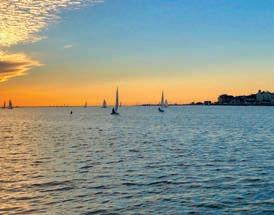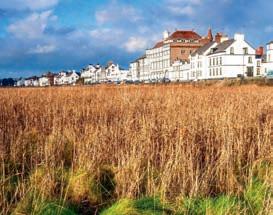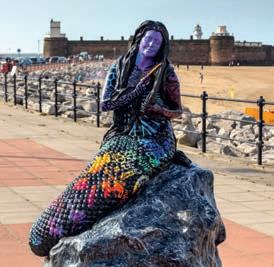

REDISCOVERYOUR SENSESIN ADELAIDE ANDSOUTH AUSTRALIA WITH QATAR AIRWAYS


Boasting breathtaking scenery, culinary wonders and enchanting wildlife at every turn, the abundant delights of South Australia are just waiting to be unearthed on your next antipodeanadventure. What's more, with daily flights in to Adelaide with Qatar Airways, it has never been easier to arrive in comfort and style.



































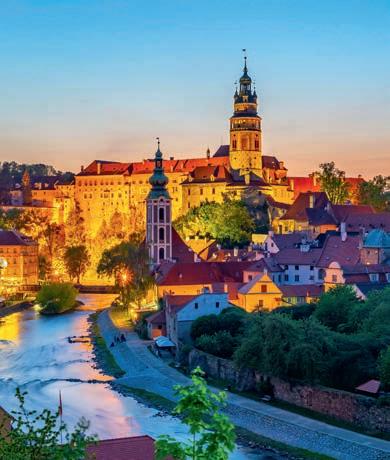



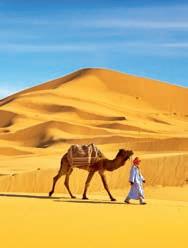


















Svalbard Archipelago, Norway

Photographer: David De Vleeschauwer
When Europe first turned its gaze on the Arctic islands of Svalbard in the late 19th century, they saw only whales and minerals. Even a decade ago, as weekly passenger flights were ramping up, its remoteness meant that it was still mainly of interest to scientists. Now visitors can just drop in to sip the most northerly brewed beer in the world, stay in remote converted mining barracks, or snowmobile on frozen wastes where polar bears still hunt on instinct. This shot, taken from TASCHEN’s new book, Remote Experiences, captures the fascination of distant places like this. We want to feel our cheeks pinken, our toes stiffening with the cold, the snows closing all around us. For the miners who toiled in nearperpetual dark, Svalbard was a hard place, but travel has the habit of unlocking even the toughest of environments. © David De Vleeschauwer. Remote Experiences: Extraordinary Travel Experiences from North to South by David De Vleeschauwer & Debbie Peppyn (TASCHEN; £50) is out now; taschen.com

Ranthambhore National Park, India
Photographer: Andy Rouse

For travellers there is no animal more synonymous with India than the Bengal tiger (pictured). Yet while seeing one in the wild might feel like good luck, it is more the result of decades of conservation work. By 1947, some 40,000 tigers prowled India; 25 years later, this was down to 1,827. Hunting and habitat destruction tore through their population, so much so that in 1973 a last-ditch plan was put in place to save them. It was called Project Tiger. Reserves such as Ranthambhore National Park were created – a former hunting ground of the Maharajas that is now famed for its big-cat sightings. This year marks the 50th anniversary of the project and the future is looking brighter, with tiger numbers more than doubling to 2,976 in the 14 years leading up to the last census (2018). As India opens its doors to visitors once more, we’re looking forward to reacquainting ourselves with an old friend; only now we know that it isn’t luck that brought that big cat into frame, but 50 years of dedicated conservation.
© Andy Rouse/naturepl.com
















RESPONSIBLE THAILAND AWARDS AND THE 2022 WINNERS ARE...
Each year, the Responsible Thailand Awards take place to shine a light on the organisations and companies that have gone above and beyond to contribute to the sustainability of Thailand. This year, the competition was as tough as ever, but with the help of our expert judges, we managed to whittle it down to six well-deserving winners. Put your hands together for the 2022 Responsible Thailand Award winners…
ANIMAL WELFARE
WINNER: Elephant Nature Park Elephant Nature Park provides a safe haven for more than 100 rescued elephants and was the first elephant sanctuary of its kind established in Thailand. Many of the elephants living here have been rescued from street begging, elephant riding, and shows where they often sustained both physical and psychological injuries. The park’s herds include blind, orphaned and senior elephants, who are now free to live peacefully in natural surroundings where they are loved and respected. ENP also supports the local community by creating jobs and purchasing locally grown produce.
JUDGES’ COMMENTS:
“Apart from all the usual elephant activities, ENP also do rainforest restoration, have educational programmes, set up Eleflix during the pandemic, have four vets on site, have their Elephant Food Bank, have their Farm to Herd initiative, and they set up their Jumbo Express mobile clinic. A clear winner!”
RUNNER-UP: Kindred Spirit Elephant Sanctuary
COMMUNITY BASED TOURISM
WINNER: Laem Sak Tourism Community Enterprise
Laem Sak Tourism Community Enterprise consists of 400 members within the Laem Sak sub-district of Krabi province, who live in 10 different villages. Laem Sak Tourism Community Enterprise’s objectives are to protect the marine and coastal resources in the Ao Luk area, to promote community tourism as a tool for local development in this multi-cultural community, and to provide local tourism services and foster cultural exchange. LSTCE actively engages the youth and locals to operate tours in the Ao Luk area and to increase income for the fishing families and farmers.
JUDGES’ COMMENTS:
“Just what community tourism should be about, and it has had positive results: 12 microenterprises directly benefiting from community tourism, 400 community members positively impacted directly and more than 1,000 travellers visiting the community.”
RUNNER-UP: Mae Hong Son CBT Network
ECO LODGE
WINNER: The Tongsai Bay
The Tongsai Bay was the first five-star luxury hotel to be built on the island of Koh Samui. Since it was first established in 1987, The Tongsai Bay continues to underscore its commitment to the environment. Its policies include minimising waste, efforts to decrease energy use and a programme to engage and educate visitors and the local community. The Tongsai Bay has won many awards for its ability to implement innovative environmental practices.
The efforts to protect the natural environment can be experienced firsthand, and more than 60 species can be seen at the property, including monitor lizards, slow loris, butterflies, dolphins, fireflies and a rainbow’s spectrum of birds.
JUDGES’ COMMENTS: “An impressive Green Policy which encompasses so many aspects of sustainability. And we love the way guests are informed and educated on the issues, helping them to make the right choices.”

HOTEL
WINNER: The Sarojin
The Sarojin is a luxury boutique residence with 56 rooms and is located in peaceful Khao Lak, which is just one hour from Phuket. This secluded hideaway is well-known for its luxury offerings, impeccable service, fine dining, ‘Just for Two’ experiences and community involvement.
Its commitment to the environment is also hugely impressive and The Sarojin operates a number of sustainable and green initiatives to minimise the resort’s and guests’ impact on the environment. For example, the hotel works with local community authorities in supporting mangrove reforestation and commits to planting a minimum of one tree for every single booking made at The Sarojin.
JUDGES’ COMMENTS:
“This hotel never rests on its laurels but constantly strives to improve its sustainability credentials, as their newly launched “One Booking, One Tree” initiative shows. Impressive stuff.”
NATURE/MARINE/ HERITAGE
WINNER: Big Blue Conservation
Big Blue Conservation is a marine conservation initiative on Koh Tao. As well as offering diving through its own diving school, it also works with other dive businesses to ensure the best practise around the island’s reefs. Guests can get involved with conservation courses, the monitoring of reef systems and organised beach clean-ups.
Big Blue Conservation contributes to global marine research and works to protect the environment around Koh Tao.
JUDGES COMMENTS:
“From working in partnership with other businesses to offering a marine biologist for a week-long course, Big Blue Conservation ticks so many boxes – vital reef conservation of course, but also community involvement, education of locals and visitors alike, and important marine research. A deserving winner.”
RUNNER-UP: Paresa Resort, Phuket
GREEN STEPS
WINNER: Gentle Giants
Gentle Giants is a non-governmental organisation that was founded by two women and set up to protect elephants, support Thailand’s indigenous communities, help preserve the forests of Thailand and conserve the environment. Gentle Giants has been sponsoring riding camp elephants during the Covid19 pandemic. The NGO now has a new initiative to rewild former captive riding camp elephants in their native jungle by supporting the incomes of Karen hilltribe villagers (the people that rent them to the camps). Their goal is to raise awareness, to give elephants a better way of life and to help the mahouts (caretakers) find a new, profitable, ethical and humane way of living with elephants.
JUDGES COMMENTS:
“They’re launching a remarkable new scheme –this potentially could be the next level up from rescuing elephants by actually semirewilding them in a way that also benefits a marginalised community.”
HOW THE WINNERS ARE PICKED
Earlier this year, we asked Wanderlust readers and the UK travel trade to nominate the Thailand-based organisations and resorts that they felt were most deserving of recognition for their green initiatives and tireless efforts to promote sustainable tourism. The criteria for judging included the sustainability of each of the projects and organisations, their demonstrable successes, and the legacy of benefits for both Thailand and international visitors alike.
For more information, go to: responsiblethailand.co.uk















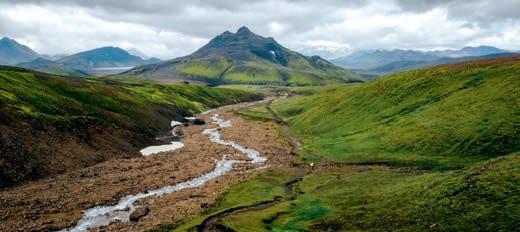
NOMINATIONS FOR THE WANDERLUST WORLD GUIDE AWARDS 2023 ARE




NOW OPEN
If your guide turned your trip into an unforgettable experience, we want to hear about it!




The Wanderlust World Guide Awards were launched in 2005 to recognise the most overlooked heroes of the travel world: guides and tour leaders.





Have you come across an outstanding guide? Someone who made your trip extra special? Someone who inspired you? Someone who really made an impact on you?
Then we want to know all about them and what makes them so special. They should be knowledgeable, empathetic and great communicators, but what else sets them apart? The more information you can provide, the more it will help our panel of judges make a decision.
Nominate your incredible guide and made sure they get the recognition they deserve in the world’s top award for this unsung profession.
Nominate by 28 February!






















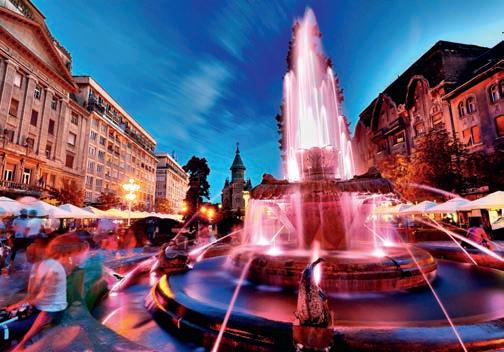





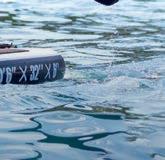























































Ever thought about your holiday ‘food print’?
Sustainable travel columnist Holly Tuppen explores how what we eat on holiday often has a bigger ripple effect than we think

There’s an island in the Maldives that ticks a lot of boxes regarding sustainability, yet at the same time you can (pretty much) eat anything you like while there, including blueberries from the USA and salmon from Scotland. I found another resort in Mauritius that has impressive green claims, including solar power and local employment, and yet each mealtime involves mounds of food being thrown away post-buffet.
Most guests don’t think twice. Much of our travel culture, especially luxury escapes, is built on a ‘whatever, whenever’ mindset, but at what cost? And is this compatible in a world where these small island states and many others are on the frontline of the climate crisis?
Research conducted at the University of Illinois found that food production is responsible for up to 37% of global greenhouse gas emissions, so what and how we eat hugely impacts rising temperatures. This includes the transportation of food and even the land needed to produce it, such as rainforests being destroyed for soya production (often used to feed chickens) and palm oil plantations.
Just as shocking is that food waste is also responsible for up to 10% of global emissions, says the United Nations’ Food and Agriculture Organization. One reason is that when unwanted food breaks down, for example, it releases harmful gasses such as methane. Given a third of all food produced is thrown away, according to research by the World Wildlife Federation, it’s a worrying cycle.
It’s no wonder that the World Bank’s Dr Juergen Voegele believes “There’s something fundamentally wrong with the way we produce and consume food, and we cannot get on top of climate change unless we change that.”
Travel can and should be an incubator for changing our habits, with low-carbon, low-waste, local and seasonal food experiences no longer as rare as they once were.
Eco-friendly food champions in travel are growing in number. For example, Morzine-based chalet company AliKats has slashed catering-related emissions by reducing meat on its menus and establishing a permaculture garden with chickens, fruit and veg. This helps to produce organic and local food for guests and provides a zero-waste environment, with scraps used either as chicken feed or compost.
In the hotter climes of Indonesia, Nikoi Island has a similarly impressive approach. A set menu made 100% from Nikoi’s in-house permaculture farm and local suppliers avoids food waste in terms of leftovers and kitchen scraps. Any organic matter that does get thrown away is transformed into compost and animal feed by biopods filled with fly larvae and red worms – a solution that guests often want to see in action.
The Cayuga Collection of hotels and lodges in Central America has long advocated for local sourcing. Co-founder Hans Pfister argues: “Why would anyone want to eat frozen salmon flown in from miles away when we have seafood on our doorstep?” Cayuga works with grassroots organisation Dock to Dish, which aims to revive traditional and sustainable practices of seafood sourcing, linking local fishermen and their seasonal catch directly with the hotel’s chefs.
In the UK, Le Manoir aux Quat’Saisons proves that luxury doesn’t mean comprising values. Winners of the ‘Sustainability Initiatives’ award for accommodation at the 2022 Wanderlust Travel Awards, this country pile in Oxfordshire, run by Raymond Blanc, has a ‘closed-loop composting system’ across its garden and orchards, and it produces over 250 different varieties of organic fruit and veg. Coffee grounds help grow mushrooms, most wine is biodynamic, and seafood is pot-caught or hand-dived.They are not alone in their efforts, and supporting those businesses willing to change in order to reduce waste will encourage others.

REALITY CHECK: IT’S NOT THE COW, IT’S THE HOW
As with most sustainable matters, there is no quick and straightforward win when greening up our eating habits. Beef is responsible for the highest emissions worldwide, but second to that is rice. So, it’s not always as simple as cutting things out or going vegan. Often, vegan products can be farmed as intensively as meat, thus creating the same problems. Rather than blanket food bans, we need to scrutinise how much meat and dairy we’re eating and look for more sustainably farmed products – grass-fed, wildlife-friendly, pesticide-free and free-range, for example.
“Food production is responsible for up to 37% of global greenhouse gas emissions”
ResiRest, a social enterprise and member of the World Fair Trade Organization, connects travellers to local families willing to prepare and share a home-cooked meal. It operates in 426 locations across 49 countries. Here we catch up with founder Geert Kroos.

“So much of the tourism industry is curating these sanitised bubbles around travellers, which can often remove the opportunity to genuinely connect with local people, see their way of life or get travellers out of their comfort zone. By providing local families with the chance to host travellers for a meal, ResiRest creates a natural two-way exchange. So-called local food is often ‘adapted’ to the tastes of travellers, but in a local home this isn’t the case. By sitting with each other at a single dining table and by eating the food that you’ve made together, people start to connect. The magic lies in not just creating a better understanding of food culture, but goes beyond that.”
GREEN FOOD EXPERIENCES
Menorca, Spain
The Balearic’s most laid-back island, Menorca, welcomes plenty of visitors in its off-season thanks partly to its slow- and local-food experiences. It’s a win-win for the island, helping to provide year-round employment, prop up local and rural economies and tackle overtourism. Experiences include the Mahon Cheese Fair every October and visits to biodynamic vineyards and artisanal saffron farms.
Saorsa 1875, Scotland
Sandra and Jack McLaren-Stewart have established the UK’s first 100% vegan stay at Saorsa 1875 in Pitlochry (saorsahotel.com). Its suppliers are also local, with ingredients coming from the hotel veg garden, foraging tours and Greencity Wholefoods –a food co-op in nearby Glasgow.
Culinary road trip in Trøndelag, Norway
Green-minded operator Up Norway (upnorway.com) offers trips that showcase low-impact Scandinavian food experiences. Activities include sea foraging, visits to microbreweries and biodynamic farm tours. And if you want to get stuck in, they also have farm stays.
Blue Apple, Colombia
A feast for the environment (clockwise from top) A study in 2017 by Ideo found that over half the food served in hotel buffets is discarded; Geert Kroos is the founder of ResiRest, which brings travellers and local home cooks together; the 15th century Le Manoir aux Quat’Saisons was the winner of the Wanderlust ‘Sustainability Initiatives’ award and is finding clever ways to put its food waste to good use

Dismayed at the lack of waste recycling in Cartagena, Blue Apple beach club and hotel set up non-profit Green Apple to turn around life on Tierra Bomba island, working with some 20 businesses. It now recycles 95% of its food waste as compost and feed for its pigs and chickens. It also uses coconuts and citrus waste to improve land regeneration.
Vogo Tours, India
Founder Harika Parmer set up Vogo Tours (vogotours.com) to provide trips across India that are kinder to the planet. It does this by avoiding all unethical wildlife interactions and serving only vegetarian or vegan meals. A ten-day Kerala adventure includes a Sadhya cooking demonstration and feast in Kochi, a spice plantation tour and a hands-on organic farm experience on the beaches of Marari.






Fairytale Irish castles
Ireland’s historic castle stays, both north and south of the border, offer far more than just fine views from the ramparts
 Reviewed by Nicola Brady
Reviewed by Nicola Brady
BALLYNAHINCH CASTLE

Sitting on the banks of the Owenmore River, this 18th-century castle is flanked by the peaks of the Twelve Bens, the jagged mountain range that snakes its way through Connemara in the west of Ireland. With antique furniture, grand drawing rooms and a fabulous walled garden, Ballynahinch has all the trappings of a classic castle escape. Allied to that is the welcoming feel of a country house: there are board games stacked by plush armchairs, smouldering turf fires and a boot room where you can grab a pair of Dubarry boots before taking a walk around the 16km of trails that wrap the estate’s 280 hectares. Rooms from £246 per night, including breakfast; ballynahinch-castle.com
ASHFORD CASTLE
Once home to the Guinness family, this 800-year-old castle stay in County Mayo is the essence of old Ireland. Its 83 rooms and suites are decked out with lavish touches, such as silk wallpaper and antique writing desks, while the 140-hectare estate is home to a falconry centre and archery range. Inside, you can opt to watch a movie in the cinema or just lounge in the spa, which is set within a striking bronze conservatory. Many of the staff have worked here for decades, though the most popular characters are the two resident Irish wolfhounds; there’s always a gaggle of guests waiting to join them on their morning walk. Rooms from £462 per night, including breakfast; ashfordcastle.com

ADARE MANOR
Adare Manor, just south of Limerick, isn’t technically a castle, but with its Gothic parapets and limestone gargoyles, it sure feels like one. Upon walking into the lobby, you’re met by soaring stone arches, intricately carved wood and deep burgundy couches in soft velvet. As you might expect, the estate activities are the stuff of pure countryside fantasy, from falconry and whiskey tasting to horse-drawn carriage rides and gun-dog trials. The Oak Room, the main restaurant here, was awarded a Michelin star less than two years after opening, and the produce served there is impeccably sourced – the honey comes from the estate’s own bees, the seaweed is harvested locally and wild herbs are foraged onsite. Rooms from £460 per night, including breakfast; adaremanor.com
























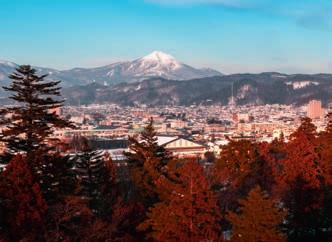

Riding in the footsteps of Alberta’s painted warriors
Saddle up for a horse-riding trek in the foothills of the Canadian Rockies that opens up a world of First Nations culture and wilderness skills

Asage-scented breeze drifted through the foliage as we sat around our campfire in preparation for a traditional Indigenous ‘smudging’ ceremony. A short time later, my guide, Tracey, stood calmly in front of me holding a large bunch of smouldering aromatic sage.With my hands, I wafted the smoke towards my face, bathing in the heavy-scented fog and thinking good thoughts in preparation for the day ahead.
I had come to Painted Warriors, an Indigenous adventure company based on a 33-hectare ranch an hour north-west of Calgary, Alberta, to experience the traditional and modern-day lifestyle of the Cree, Ojibwe, Métis and Mohawk peoples. The company was started by Tracey Klettl and her partner, Tim Mearn, in 2010, and from my first meeting with Tracey it was clear that she was a woman of strength, both in body and mind. Born of Cree and Mohawk descent, her cascade of long, dark hair and ready smile accompanied a skillset even the hardiest of outdoors people would envy. Not many can claim to be both an accomplished riding instructor and a competitor for Team Canada in archery, winning multiple national championships along the way.
“I was born in Jasper (Alberta) and my Indigenous ancestors were the group of people who were removed from Jasper National Park in 1910,” she told me. “I grew up with traditional land-based knowledge that had been passed on from my grandmother.”
That knowledge, she explained, is woven into everything they do at the camp, which offers a mix of wilderness education, hands-on training and insights into Aboriginal traditions and stories. On the surface, Tracey and ⊲
Words & photographs Lisa Young









Peak performance (clockwise from left) Travelling with like-minded travellers makes sharing that view after a long mountain hike all the sweeter, and feedback from Exodus travellers about the social element of its trips has been immeasurably positive, with people often leaving with friends for life; enjoy the iconic view above Peru’s Machu Picchu on Exodus’ The Inca Trail tour

Travel gives us so much. It allows us to witness spectacular new sights and experience unique cultures that are completely different to our own. It challenges us and it moves us – often in more ways than one. And on our return, we’re left richer, wiser and bursting with fascinating stories to tell. Start planning your 2023 travel experiences now with the help of Exodus. Here’s what to expect…
1 IMMERSE YOURSELF IN YOUR SURROUNDINGS
We no longer want to just ‘visit’ somewhere; we want to experience it in 360 vivid degrees. We want to live it, breathe it and fully participate in the culture and the landscape. Imagine observing the rare sight of endangered green turtles laying eggs on Tortuguero beach in Costa Rica, or holding your breath during hatching season as baby hawksbill, loggerhead and giant leatherback turtles blindly fight their way out of their shells towards the Caribbean sea, all possible on Exodus’ Natural Highlights of Costa Rica tour. More nature experiences abound in this Central American country, where you’ll explore natural waterways, cloud forests and volcanoes on the same trip, spotting creatures as diverse as howler monkeys, threetoed sloths, iguanas and more.
Elsewhere, on Exodus’ Highlights of Northern India tour, you’ll take in the thrumming pulse of Delhi’s teeming streets, the rose-pink architecture of elegant, royal Jaipur, the incomparable, iconic white marble mausoleum that is the Taj Mahal, plus the imposing Red Fort of Agra. In addition, a trip here with Exodus offers the chance to spot tigers in Ranthambore, observe worshippers soaking in the holy waters of the Ganges, and see New Delhi’s Arc-deTriomphe-like India Gate.
Alternatively, you could explore the alien-like landscapes of Namibia on the Discover Namibia: Camping trip. You’ll experience lunar-like surfaces at Sesriem, Martian-red sand dunes at Sossusvlei and the mixed forest and grassland of Etosha Park. Along the way you’re likely to spot desertadapted animals, including elephants, giraffes and cheetahs.
2 GET OUT OF YOUR COMFORT ZONE
If you want to savour a memory forever, link it to an adrenaline rush; studies show that experiences which make you feel excited, stimulated, or even scared are more easily remembered. You don’t even have to brave a bungee jump, there are plenty of other ways to get your heart beating. For example, join Exodus on a trek to the summit of North Africa’s highest mountain, Mount Toubkal (4,167m). Located 80km south of Marrakech, ascending the tallest peak in the Atlas mountains involves hiking through small Berber villages, threading picturesque valleys and passing scenery such as the Ighoulidem waterfall. The ascent itself offers scenic views across to Marrakesh, where you’ll end your trip.

A spectacular vista will never be forgotten, such as the mystical ancient citadel of Machu Picchu, which reveals itself slowly during sunrise or emerges gradually from behind the clouds. The reward is all the sweeter after a four-day trek from Cusco at high altitude, camping along the way on Exodus’ The Inca Trail tour. En route, you’ll pass through corn fields and cactus gardens, fording cloud forests and vertiginous mountain passes all with fine views.
Or why not discover Vietnam as the locals do: by bicycle? Join Exodus’ Cycling Vietnam trip and you will be able to do just that. You will embark on a fascinating route from vibrant Ho Chi Minh city in the south to the buzzing capital, Hanoi, in the north. Along the way, you will pass through characterful fishing villages, emeraldgreen rice terraces and junglecloaked mountains.









A revolutionary idea
Philadelphia’s experimental arts scene began as a response to the changing city around it; now it joins its fine-art galleries in making Philly a rising star for culture-seeking travellers
 Words Jacqui Agate
Words Jacqui Agate





















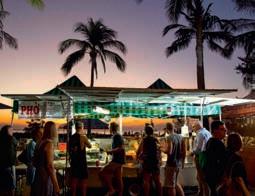
The land of eternal
STORIES
The Northern Territory’s 65,000 years of Indigenous history is wrapped up in otherworldly natural landscapes, making this the perfect place to explore the secrets of Aboriginal Australia
Words & photographs George Kipouros






































After the FIRES
The bushfires of 2020 ravaged South Australia’s Kangaroo Island, scorching over half of its land. We return to see how both locals and the native wildlife are bouncing back
 Words Lyn Hughes Photographs Simon Chubb unless otherwise stated
Words Lyn Hughes Photographs Simon Chubb unless otherwise stated




on the cake came as I was being shown my villa. Tamsin pointed out of my window and declared: “There’s a kangaroo out there right now, and it’s very much alive.”
Sure enough, Kevin, as I dubbed him (sorry!), was grazing just a hundred metres away. After settling in, naturalist guide Nikki accompanied me for a slightly closer look. Chocolate in colour, the kangaroo brought his head up to peer at us as he became aware of our presence. Nikki told me he was almost certainly an old male seeing out his days.
“This is a good place for him,” she said, “as there is plentiful food and he won’t be disturbed.” She also explained that the kangaroos here are actually a sub-species of the western grey, having evolved separately to those on the mainland. “They have a heavier build and a shorter nose and ears.”
I was assured there were wallabies around too, and I kept looking for signs but hadn’t spotted any. However, when I mentioned them to Tim that evening, his eyes twinkled.

“They come out at night,” he said. “Let’s see if they’re outside.” He passed me an infrared night-vision torch, which wouldn’t disturb any wildlife, and sure enough, a mob of at least a dozen were grazing outside the window.
WHO NEEDS BRAINS ANYWAY?
I woke to an overcast morning and the reassuring sight of Kevin the Kangaroo not too far away. Craig Wickham, owner of Exceptional Kangaroo Island, came to pick me up for the first of two days of exploration on KI. Craig was the winner of Wanderlust’s World Guide Awards in 2021, so I was particularly excited to have the opportunity to be guided by him. As we pulled away in his 4WD, I was full of expectation. And then the rain came.
South Australia was having a particularly wet and cool spring, and what was a light drizzle turned into a relentless downpour as the hours went by. Our first mission was to find koalas, the iconic mammal that became something of a poster child for Kangaroo Island during the bushfires as upsetting images of singed koalas went viral around the world, pulling at heartstrings.
We turned into a road bordered with bare trees – burnedout victims of the fires. Given the lack of vegetation, I was surprised to see that several had easily spottable koalas cradled within their branches.
“The new vegetation is growing below the trees, so they climb down to eat and then clamber back up,” explained Craig. Each koala was huddled against the rain and looking rather mournful, eliciting sympathetic coos from me. Craig wasn’t quite as sentimental: “Koalas are weird,” he told me. “They have tiny brains, one of the smallest of any mammal compared with their body size, and the surface of their brain is completely smooth – a sign of not being very intelligent.” Tiny brain or not, they were adorable.
Surprisingly, koalas are not native to Kangaroo Island; they were introduced here in the 1920s as a conservation measure after hunting and habitat loss had severely reduced their numbers on the mainland.They have thrived ever since, but had reached an unhealthy number. As Craig pointed out, the koalas were eating themselves out of house and home, and for all the devastation and sadness the fires had wrought, their population was now much healthier.
We drove on, and with my eyes now attuned, I kept spotting soggy koalas huddled in the trees as well as occasional glimpses of kangaroos and wallabies sheltering under bushes. As a mother kangaroo and her joey bounded ⊲
Keeping lookout (right) A tammar wallaby watches from atop Stokes Hill at Flinders Chase National Park. Kangaroo Island has the largest remaining natural population of these creatures in Australia
AWL Images




































































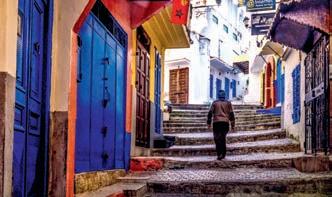




EDITORS' HOT LIST 2023
To celebrate our 30th anniversary, we have picked 30 of the most exciting destinations to explore over the coming year
COUNTRIES 1 Bahamas
In 1973, the Bahamas finally gained independence from the British Empire; 50 years on, it is celebrating as only the islands know how: wildly. The usual festivities go longer and harder this year, with Junkanoo at the heart of things.The festival takes place across the Caribbean but is thought to have originated in the Bahamas, when West African slaves began donning homemade masks on Boxing Day and New Year’s Day. The modern-day equivalent is a colourful riot of music, costumes, dancing and parades, and is also set to take over the streets on July’s National Day this year. For more context, Nassau’s informative Pompey Museum elaborates on the horrors that preceded the party. Elsewhere,
events will span the 16 main islands year-round (bahamas.com); and from March, for the first time ever, daily flights from the UK ensure that there is no excuse not to join in, so get ready to dig out your best party clothes.
2 Czech Republic
On 1 January 1993, what was formerly Czechoslovakia split into two – one half became Slovakia; the other turned into the Czech Republic.When we think how familiar Prague’s cobbled maze of Gothic spires and Baroque libraries have become, it’s amazing to think they were still locked behind the Iron Curtain around the time Wanderlust was starting up. However, while the bulk of the festivities take place in the well-trodden capital, where the National Museum is a good place to brush up on history, travelling deeper lets you see just how much has changed here. The longest pedestrian bridge in the world – the spectacular Sky Bridge
721 – opened to the public in 2022 at Králický Sněžník, and the revival of ‘timber rafting’ (an old method for transporting wood) in Český Krumlov now lets you drift its waters in peace. Add to that the Pilsners and underground labyrinth of Bohemian Plzeň, the wineries of Moravia and the rise of the ‘peat spa’ in the north-west town of Třeboň. Na zdraví

What’s in a name?
(left) The earliest known celebration of Junkanoo in the Bahamas dates back to 1801, with one theory behind the origin of its name being that it is a corruption of a mysterious African king, John Canoe, a leader of the Ahanta on what was then the Gold Coast, who fought against the European colonialists; (right) the Velvet Revolution derives its name from the comparatively peaceful way in which the Soviet regime of the time relinquished its power
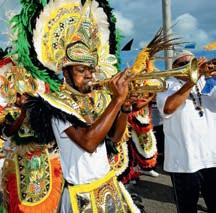




























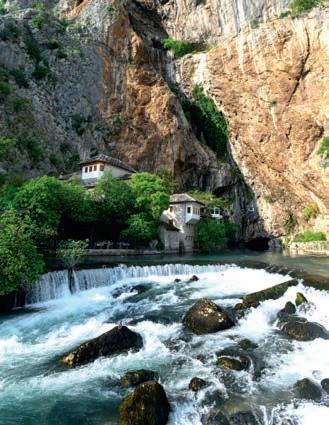
READERS’ MOST DESIRABLE DESTINATIONS 2023
You voted in your tens of thousands to tell us the places that stirred your wanderlust; now we’re ready to give you the results…
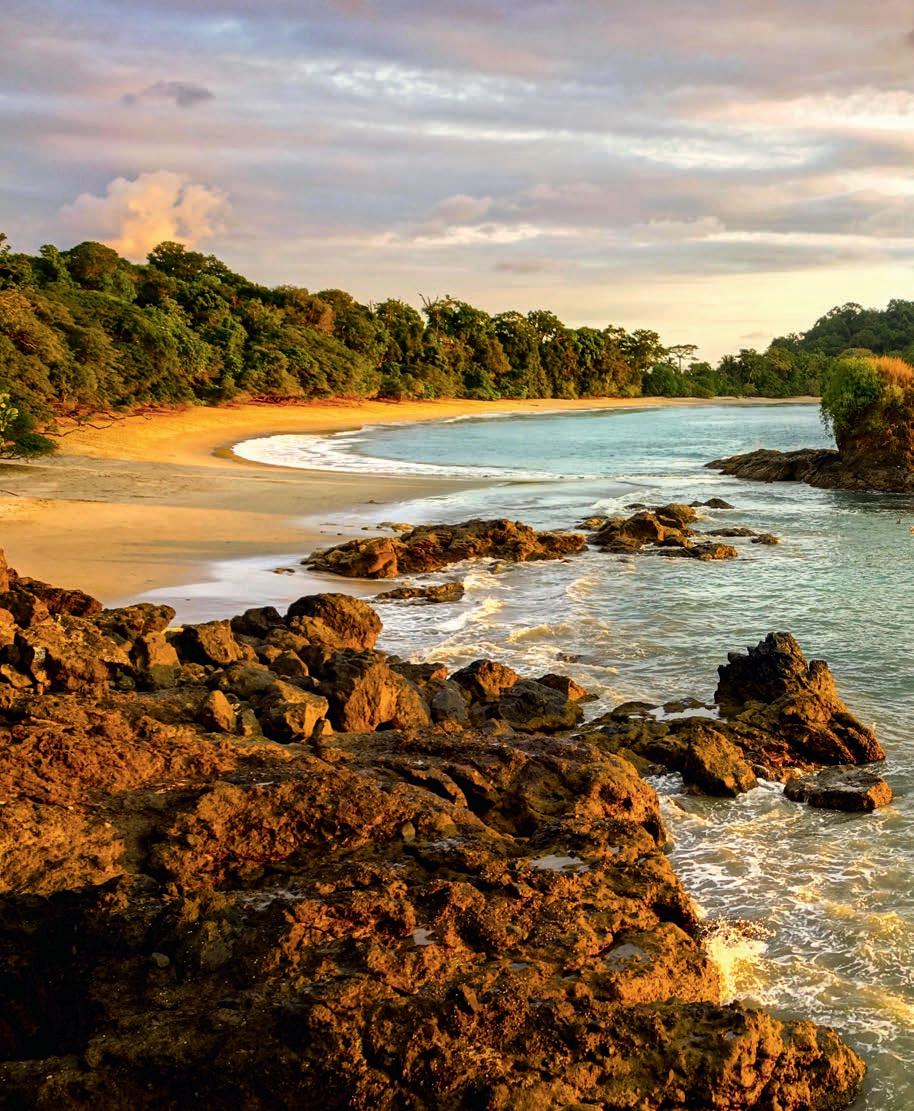
MOST DESIRABLE COUNTRY (REST OF THE WORLD)
COSTA RICA

We didn’t have to look too far to see why you were so excited by Costa Rica. This green nation points the way for a lot of countries, not just in making use of its natural gifts but in how they are being preserved. It wasn’t always the case. In the late 1980s the country had lost nearly half of its forests to logging and farming; however, by 2021, when it was awarded the Earthshot Prize for its conservation work, it had become the first tropical nation to successfully rewild its land. Some 60% of Costa Rica is once again covered in forests, creating an environment for half a million plant and animal species. In doing so, the door was opened to some truly remarkable travel experiences.
By virtue of its conservation efforts, over a quarter of Costa Rica’s land is now protected, transformed into lush parks, reserves and refuges stretching from coastal mangrove to volcanic lowlands. The chance to wander in cloud forests and scan the trees for moss-covered sloths; walk the beaches of Tortuguero National Park (NP) in search of nesting loggerhead turtles; or to explore the remote Osa Peninsula, where mysterious pre-Columbian stone spheres still baffle historians and jaguars prowl the dense rainforest, is possible only because of the efforts to preserve this environment.
What’s more, the number of green stays in Costa Rica’s wilder corners have boomed in recent years. Only last winter, Habitas Santa Teresa, a completely sustainable resort, began inviting guests to the Nicoya Peninsula, where you can snorkel a submerged volcano. It joins a host of remote luxury hotels, from the jungleset Pacuare Lodge, where visitors raft in, to Origins, whose setting on the cusp of Lake Nicaragua opens up the wild volcano trails of Tenorio NP.
There is so much to see here, from the perfect cone of Arenal volcano to the cloud forest of Monteverde. Tiny Costa Rica, home to 5% of the world’s biodiversity, is making the most of its gifts and setting an example for everyone else. And while neighbouring South America loses an average of 2.6 million hectares of forest per year, it shows travellers that it doesn’t always have to be that way.
YOUR TOP TEN FAVOURITES
Gold Costa Rica
Silver Canada
Bronze Australia
4th New Zealand
5th USA
6th Japan
7th Peru
8th South Korea
9th South Africa
10th Jordan
With British Columbia and Montreal having placed highly elsewhere in these awards, it is no surprise to see Canada take silver. The North American giant ticks every box adventurers could wish for, from skating the Rideau Canal to riding the train through miles of aurora-lit tundra to Churchill, where polar bears roam en masse. It is packed with thrills. Special mention goes to its growing number of Indigenous tours, with trips to the far-flung communities of Nanavut among many opportunities to understand more about the histories of First Nations peoples.
The same can be said for bronze award-winner Australia, which is undergoing its own quiet revolution as more land is returned to Aboriginal Australians. The chance for travellers to experience these sights with Indigenous guides, learning a history far removed from the European one most are familiar with, has opened up a new way of seeing the country. And with more non-stop flights from the UK on the horizon (Sydney is mooted for 2025), Australia is only likely to rise in our estimation as it becomes easier to access.
Turning green (left) The sun sets over the shores of Playa Espadilla in Parque Nacional Manuel Antonio. This is Costa Rica’s smallest national park (at just 6.8 sq km), but it is riddled with forest trails where, if you’re lucky, you might just spy recumbent sloths lounging in the guarumo trees overhead
Further down, both Japan and New Zealand reopened their borders to travellers late in 2022, and absence has clearly made our hearts grow fonder. But we are especially excited to see the appearance of Jordan in this category. The Nabataean ruins of Petra are well known, but as activities such as the Jordan Trail, one of the few long-distance hikes in the Middle East, have shown us, the country’s red-rock wadis and desert reserves offer plenty to conjure with.





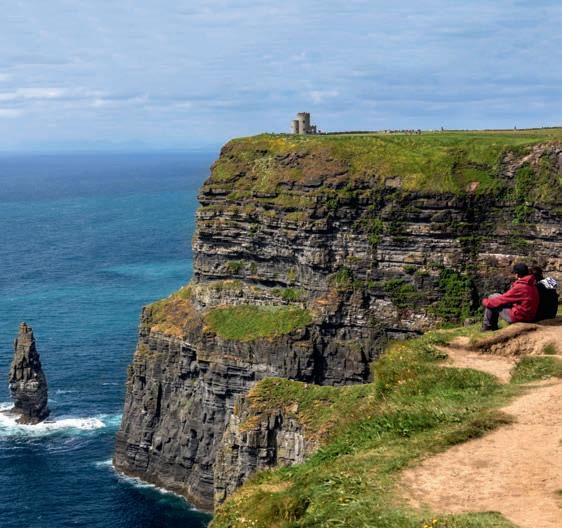








An Arctic rail
SAGA
Take a ride on the real Polar Express with a new tour that uses the Nordic rail network to cross the Arctic Circle and enter a frozen world of huskies, ice hotels and dazzling night skies
Words & photographs Emma Thomson




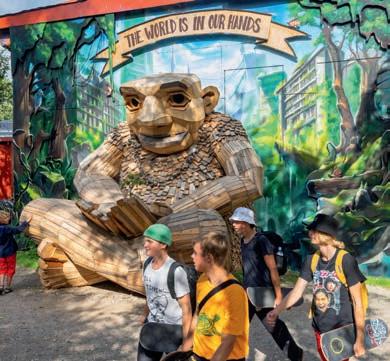































THE PACIFIC NORTHWEST IN
LIVING COLOUR
Go west, they cried. Road-tripping the USA’s northwestern states of Washington and Oregon reveals cities, islands and histories moulded and shaped by the wilderness that is forever knocking at their door…
 Words Gareth Clark
Words Gareth Clark

“Push with your toes,” coached my guide, Austin of Wanderlust Tours, from further back in the tunnel. Lying on my belly, I huffed with the effort, scattering clouds of ash and dust into the stale air, wondering just how cramped this narrow opening would get. “Don’t worry,” he soothed, sensing my unease, “I can always drag you back by your feet…”
It’s a strange feeling to be wriggling down a 50cm-high, pitch-black shaft knowing full well a dead end is nearing. As my fingers clawed at the powder-fine ash on the cave floor, I pictured the eruptions that had reshaped this part of central Oregon 80,000 years ago, threading it with lava tubes like this one, near Bend. Dirt had blown in through cracks furred with the hair-like roots of sagebrush and ponderosa pine, but there was no breeze here now. The only movement came from the cosmos of particles detonating in my torchlight with every tiny movement.

By now, the crawlspace was the width of my shoulders. As the lava had surged, its surface cooled and crusted over, forming a tunnel that sharpened to a pencil point. It was here, after half a kilometre, that it finally slowed. As I jerked my body around the last bend, my headtorch flashed on an ancient moment, captured in rock. I freed an arm to press my hand on the basalt. It felt cool and ordinary. This was the kind of history you don’t normally see, let alone touch; a kind of anti-history: the point at which everything stopped.
“It’s incredible to think that all that violence and power could create a moment like this,” Austin confessed later as we sat in a larger cavern with our torches off, trying to hear the wind whistling through the passages. “Geologically, the Pacific Northwest is the youngest part of North America,” he whispered, “formed barely 200 million years ago.” I replied that it felt sooner. Driving Washington and Oregon had revealed misty volcanoes that lingered like dark thoughts on the edge of towns. And everywhere I went, people talked loudly of an overdue quake known as ‘the Big One’. It adds a certain drollness to the local humour.
I flicked my headlight on and spied a piece of white-encrusted rock, poking it with curiosity. “That’s definitely someone’s pee,” Austin deadpanned. And back we went.
I had come to the USA’s Pacific Northwest to explore a region where wilderness creaks at the city gates. I had found urban centres wrapped by glacial waters and walked among rainbow-streaked hills and rainforests where moss draped from the branches like primeval washing. But as I travelled, what was just as exciting was how its cities, islands, histories and people had been shaped by them. Beginning in Washington, I didn’t have to look hard to find examples.
SECOND TIME LUCKY
“Are you inside or outside?” asked Terri, the inquisitive guide for Seattle’s Beneath the Streets tour. It’s a simple enough question – childlike even.Yet, as I gazed at the walls to either side, noting the ‘basement’ ceiling overhead, I paused.
Washington’s Seattle is a city where you can spy volcanoes and skyscrapers in one glance, yet, bizarrely, what lies beneath your feet is just as fascinating. In the late 1800s this was all a low-rise sprawl stretched across tidal flats. Sewage dumped in Puget Sound gurgled back into muddy streets and it took the Great Seattle Fire of 1889 to cleanse them. A new city – the one you see today – was built atop the ⊲
The land of rock (clockwise from left) Smith Rock State Park was formed by lava flows entering its canyon half a million years ago and is now best known for its climbing, though it also found fame in the 1970s as the filming location for the John Wayne movie Rooster Cogburn; ‘The Traveler’ sculpture sits on the corner of Wall Street in the former logging town of Bend, though its hard-up impression is rather ironic these days given how affluent the city has become, building a reputation as Oregon’s take on Jackson Hole; the Astoria–Megler Bridge spans 6.55km across the mouth of the Columbia River, connecting Washington and Oregon states; Austin, of Wanderlust Tours (no relation), takes it easy in ‘The Chair’, one of many weird rock formations found in the lava tunnels outside Bend, which have been known to be occasionally invaded by teens setting up impromptu raves




old; pavements were suspended as high as 12 metres above the mud. It brought jobs, cash and, before it was covered, the sight of locals clambering three storeys for a beer.
“No one died in the fire, but 17 men were later killed by falling off ladders drunk,” observed Terri in her rat-a-tat style as I gazed at the walls, suddenly curiously thirsty.
These old streets still lie under parts of downtown, and as we dipped in and out of basements, I learned how the early art and LGBT scenes found cheap rents and freedoms underground. It was my introduction to a city that often felt like someone had looked at the waters of Puget Sound and thought: yeah, I can do better. The current tech-fuelled construction boom is growing a newer quakeproofed city, but remnants of its last big push, when the World’s Fair arrived in 1962 and the Space Needle heralded a brave new future, held more charm. Later that evening, I saw the city’s skyline from the Alki Island ferry and pondered how fitting it was that modern Seattle, birthplace of Microsoft, was actually the 2.0 version. It made me curious to seek out other pieces of its living history.
You can see Pike Place Market’s red-letter sign long before you arrive. Erected in 1907, the building was a symbol of Seattle’s decline for many years. In the 1970s a vote was held on whether to preserve it; today it supports itself with donations from the 10,000 or so visitors a day who call on its food stalls, watch its salmon-hurling fishmongers or pose in front of the gum-filled wall, created over the years by bored music fans who pinned their used wads to the bricks while queuing at a club, stretching them out like dayglo icicles.

My favourite story about the market was told to me by Bob Williams of Show Me Seattle tours. After the big San Francisco earthquake of 1906, Washington sent timber down the coast to help it rebuild. San Francisco had no money to pay, but the returning empty cargo ships had to be weighted with something, so they used marble. It was put to good use by the city. Between mouthfuls of Danish, I gazed at the glistening cobbles underfoot and smiled.
By night, I explored hipster bars and eateries in the up-and-coming Fremont and Ballard neighbourhoods. By day, my time in Seattle ended on Lake Union, having borrowed a rowing boat from the Center for Wooden Boats, a charming anachronism-cum-museum that also fixes old skiffs and yachts in the shadow of the new Google campus. This glacial lake used to be lined with the fruits of industry and was one of the poorest parts of the city; now its rusted gasworks have been turned into an island park and the old floating homes of the workers sell for upwards of a million dollars. I rowed closer to the jettied pavements to peer at the houses’ homemade flags hanging limp on their poles. At the Center I’d been told how the new skyscrapers had changed the way the wind moved across the water. Just as I was contemplating this, a boat equipped with a hot tub chugged past, its passengers steaming obliviously as I gave a wave. I rowed on. The winds here had changed long ago.
A BIRD IN THE HAND…
My final glimpse of Lake Union was less sedate. Within minutes of boarding the seaplane it had rubberbanded off the water, banking sharply as the Space Needle loomed. Just forty minutes later, we splashed down at Friday Harbor on San Juan Island, part of an eponymous archipelago in the Salish Sea and a popular bolthole for weary Seattleites. I’d swapped skyscrapers for serenity. I made my base in Roche Harbor, a pretty resort with industrial roots. In the late 1800s, John McMillin, a lawyer with strong ‘Mr Burns’ vibes, turned its lime deposits into his personal fortune, creating a town for his workers.The walls of my hotel glowered with his portrait, and I’d heard his family mausoleum lay nearby. I soon stumbled on an empty stone table and chairs (each containing ashes) wrapped by a rotunda. It conjured an eerie magnificence, pitched somewhere between mason and pharaoh.
The island’s roads were blissfully quiet. San Juan doesn’t even have traffic lights, but I had arrived during the US midterms, so the roadside was filled with red and blue signs. I found grander history in San Juan’s British and US camps, the settings for a stand-off known as the ‘Pig War’ of 1859, when ownership of the island was in dispute. Tensions had come to a head over the shooting of a British pig by a US farmer, giving rise to the glorious, if likely apocryphal, line: “It is up to you to keep your potatoes out of my pig!”
The camps, at either end of the island, couldn’t be more on the nose. The British hunkered in a genteel inlet, all manicured gardens and high-tea picnics, while the Americans toughed it out on a windswept bluff above the Haro Strait. Eventually, the unlikely arbiter of Germany’s Kaiser Wilhelm found in favour of the US and the Brits had to pack up their china and leave. I followed suit, but not before going in search of the island’s biggest prize.
It isn’t pigs but orca that brought me to San Juan. A resident pod visit the waters of the Haro Strait year-round, though the dwindling salmon population (a theme across the northwest) is making their survival harder. I set out in a kayak with Andrew of San Juan Outfitters knowing the chances of seeing one were slim, but the sighting of a friendly harbour seal at the marina seemed a good omen.
“The mausoleum conjured an eerie magnificence, pitched somewhere between mason and pharaoh“
In the market for fun (clockwise from top) The Space Needle towers over Seattle, a city that was built atop the original settlement after a fire in 1889 burned much of it to the ground, leaving basements all over downtown where you can still see the old city streets; Dungeness crab is just one delicacy sold in the Pike Place Fish Co, where you’ll spy fishmongers noisily hurling huge salmon to each other throughout the day; Dustin [centre], a boatwright at the Center for Wooden Boats, explains the history of the museum, which was started by architect Dick Wagner, who began renting skiffs from his floating home on Lake Union in the late 1960s; Show Me Seattle tour guide Bob stands next to Rachel, the 250kg bronze piggy bank, and explains how Pike Place Market is run on donations – many of the tiles on its pavement have been bought by donors, whose names you can see, including Scientology founder L Ron Hubbard; the market’s famous sign













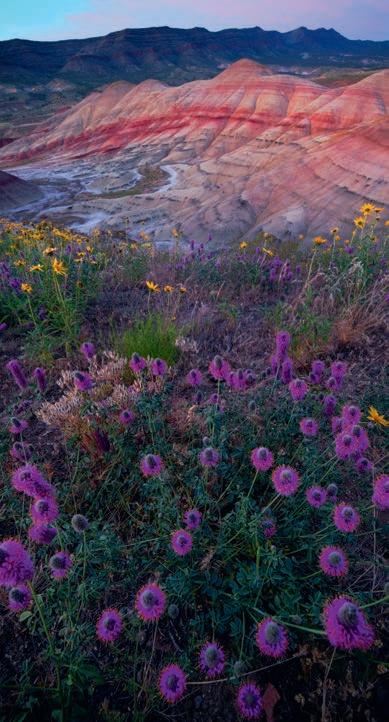




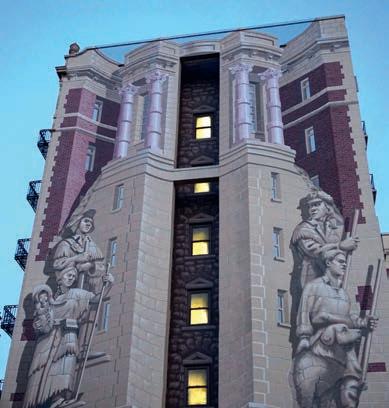


























All that glitters (this page; top)
The riches of Cerro Rico were discovered entirely by accident. The herder Diego Huallpa was said to have started a fire on the mountain to keep warm, but then spotted a trickle of molten silver emerge from beneath the flames
Potosí, Bolivia
The wealth that spilled from the hills of the altiplano city of Potosí financed dreams and revolutions; now the spoils of its 16th-century silver boom scatter its UNESCO-listed streets, writes Shafik

Around 1545, so the story goes, a herder named Diego Huallpa climbed a mountain in the altiplano, an Andean plateau stretching across what is now western Bolivia, in search of a missing llama, only to stumble upon a seam of silver. The recently overthrown Inca empire considered this peak to be sacred, but the Spanish conquistadors, who had heard about the discovery, swiftly started mining. The mountain, which became known as Cerro Rico (Rich Hill), proved to be the greatest source of silver in history.
At its foot developed the city of Potosí, which grew to become one of the wealthiest and most industrialised places on the planet in the 16th and 17th centuries. Home to some of Latin America’s finest examples of architecture, at least one street was literally paved with silver. In the novel Don Quixote, published in the early 1600s, the eponymous knight remarks to his squire, Sancho Panza, ‘It’s worth a Potosí’ – aka a fortune. The legend on the city’s
coat of arms even boasted: ‘I am rich Potosí, treasure of the world, king of the mountains, envy of kings.’
Cerro Rico’s silver had a seismic impact. It created global trading networks, propped up the Spanish empire and helped to fuel the Industrial Revolution, changing the Western world. But it came at a horrific cost. So many Indigenous people and enslaved Africans died in the mines and processing plants that Cerro Rico became known as ‘the mountain that eats men’.
Today, the silver has long gone and the local economy is in the doldrums, but the city remains one of the most fascinating in South America. Lying south-west of Sucre and north-east of the Salar de Uyuni, the world’s biggest salt flat, Potosí is surrounded by stark, inhospitable steppe and towering, snow-streaked peaks. At a breathless altitude of 4,090m, it is one of the highest cities on Earth (second only in Bolivia to El Alto, which sits next to the country’s de facto capital La Paz).
Meghji
“I am rich Potosí, treasure of the world, king of the mountains, envy of kings”
Named a UNESCO World Heritage site in 1987, Potosí is an architectural treasure trove, boasting some 2,000 elegant and remarkably well-preserved 16th-, 17th- and 18th-century churches, mansions, theatres and other historical buildings. They share the distinctive Mestizo-Baroque style, which combines Indigenous and European designs: keep an eye out for traditional Andean symbols, such as the sun and the moon, alongside Catholic iconography in the grand cathedral, which overlooks the main square and hides an interior that is a wedding cake of white pillars, pink marble, stained glass and gilt edging.
Looming above the city’s sea of terracotta-coloured roofs is the dusty, ochre-red peak of Cerro Rico, which is honeycombed with tunnels and shafts, some dating back almost half a millennia. Largely unchecked mining continues, which prompted UNESCO to add Potosí to its ‘List of World Heritage [sites] in Danger’ in 2014. If you don’t suffer from claustrophobia, take a guided tour of Cerro Rico, where miners still toil on tin, zinc and lead seams, sustained by coca leaves and offerings to the demonic El Tío (The Uncle), the mythical lord of the underworld. It’s an extreme but unforgettable experience.
NEED TO KNOW
Location: Potosí lies 540km southeast of La Paz, which has the nearest international airport. There’s also a domestic airport 155km northeast of the city in Sucre, Bolivia’s constitutional capital. Potosí has bus, minibus and shared-taxi links to La Paz, Sucre, Oruro (a useful hub) and sites such as the Salar de Uyuni. Given the distances involved and the rough roads in the altiplano, it is sensible to stay at least a couple of nights.
Getting around: Central Potosí is compact and easy to explore on foot. The altitude can be challenging, though, so don’t push yourself and allow adequate time to acclimatise.
Accommodation: There are several good guesthouses, hostels and hotels in Potosí, usually in historical buildings. Try the Hostal Colonial (hostalcolonialpotosi.com.bo; doubles from £65) or the atmospheric Hotel Museo Cayara (hotelmuseocayara. com; doubles from £120), which lies a short drive from the city.


Further information: Shafik’s book, Crossed off the Map: Travels in Bolivia (Latin America Bureau, 2022), explores the history of Potosí in detail, as does the Rough Guide to Bolivia (2018), which he co-authored.
Back in central Potosí, the architectural highlight is the Casa Real de la Moneda, the heavily fortified former royal mint, which covers an entire city block. Now a museum, its evocative halls and smelting rooms contain an array of art and artefacts, coins and machinery from the city’s heyday, including the mesmerising Mestizo-Baroque painting ‘La Virgen del Cerro’ (The Virgin of the Mountain). The artist who painted it is unknown, yet it remains one of the most significant pieces of art in Bolivia, with the Virgin Mary at its centre representing both Pachamama (Mother Earth) and Cerro Rico.
Above the Casa Real de la Moneda’s entrance hangs El Mascarón, a symbol of the city. At first glance, the unsettling face is often taken to be the Roman god Bacchus, but like everything in Potosí this 19th-century creation is open to interpretation. Some claim it is llama herder Diego Huallpa; others argue it is a caricature of the director of the mint or was built to cover up the Spanish royal coat of arms after Bolivia won its independence. If you look closely, you will notice El Mascarón is not entirely symmetrical: one side smiles, the other grimaces. Given Potosí’s tumultuous history, that feels appropriate.
Built to last (this page; top–bottom) By the 16th century the area around Potosí was one of the world’s largest industrial complexes, and its riches became more evident in the grand MestizoBaroque buildings that filled its streets, setting the artistic tone for the Andean region; the Casa Real de la Moneda was built to replace the city’s original mint in the mid-1700s and churned out silver coins marked with the letter ‘P’, known as potosís – now the building serves as one of the finest museums in the region











Alpes-de-Haute-Provence
France’s south-eastern department is more than the bucolic countryside of a Peter Mayle novel; it’s rocky fringes and historic towns have a majesty travellers often miss, writes Katja
 Gaskell
Gaskell
Provence typically conjures up images of rolling green hills, endless rows of lavender fields and honey-stone hilltop villages, but in reality this area is much wilder than you might think. Its setting lies in the south-eastern corner of France, better known as the Provence-AlpesCôte d’Azure region, which is one of the country’s most diverse areas: a place where you can be rubbing shoulders with the glitterati in Cannes one day and scaling limestone peaks or skiing in the mountains the next. The Alpes-deHaute-Provence department is where this landscape shifts up a gear, revealing an increasingly steep terrain until it meets the jagged band of snowy summits that make up the southernmost portion of the French Alps. This topography is heaven for adventurers, with all kinds of thrills on the menu, from hiking and rafting to cycling, canyoning and, of course, mountaineering. In the south of the department lies the Verdon Natural Regional Park. Here you will find France’s answer to the Grand Canyon: Verdon Gorge, a breathtaking 25km-long ravine that sinks to a depth of 700m at points. The turquoise-green glacial waters of the Verdon River are a hotspot for watersports. Elsewhere, in the more remote reaches of the park, you may spy chamois, roe deer and wild
Scents and serenity
The lavender fields of the Valensole Plateau come to life between mid-June and mid-August, when they are at their most colourful; (previous spread) the 17th-century hilltop citadel of Entrevaux was

boar roaming the land, while griffon vultures and golden eagles are known to patrol overhead. The rest of it is given over to the Plateau de Valensole, where endless lavender fields brighten the summer months.
To the west, the UNESCO-listed Luberon Regional Natural Park straddles the department border, spanning vineyards, orchards and oak woods that sprawl beneath craggy limestone mountains. The Luberon area is well known for its medieval villages perchés (perched villages), which totter on steep headlands. The most famous lie in the neighbouring Vaucluse department, but don’t ignore those on the Alpes-de-Haute-Provence fringes; their cobbled streets and diminutive town squares are equally charming and far less crowded.
The prefecture of the Alpes-de-HauteProvence is Digne-les-Bains, a sunny spa town and the self-proclaimed lavender capital of France – although plenty of towns make that claim. Regardless, it once charmed the BelgianFrench explorer, writer and anarchist Alexandra David-Néel so much that she settled there in 1928. And as she discovered, there’s plenty more to see. Towards the border with Italy lies Mercantour National Park, the Mexican villas of Barcelonnette and the region’s ski resorts, promising fresh snow under a blue Provençal sky.

Ask a local

“The Forcalquier area is rich in medicinal plants and natural herbs that have been picked and used by herbalists for centuries. The plants that grow here have a particular quality owing to the geography of our region; at night they are exposed to the cold temperatures of the Alps and during the day they enjoy the sunshine of Provence. We like to say that our sky is the purest in Europe. Pastis is a very old tradition in this region, and we have been making ours since 1924.”
Alain Robert is the owner of Distilleries et Domaines de Provence, which was founded in Forcalquier
44.0779° N, 6.2376° E
ALPES-DE-HAUTE-PROVENCE IN 4 DAYS
Day 1: Medieval fortifications
Enjoy a scenic ride on the Train des Pignes from Nice to the medieval city of Entrevaux. Cross the ancient stone bridge over the River Var and explore the maze of narrow twisting streets. Don’t miss the town’s cathedral, which has a wonderfully ornate Baroque interior. Then climb 150m to the 17th-century citadel for spellbinding views.
Day 2: Le grand canyon
Discover France’s answer to the Grand Canyon on a rafting trip along the azure waters of the Verdon Gorge, starting in the pretty village


of Castellane. Get a bird’s eye view of the gorge with a drive along the Corniche Sublime, a vertiginous road with hair-raising panoramas. Continue on to the Valensole Plateau, which transforms into a sea of lavender during the summer.

Day 3: Hot springs, walks and bike trails
Do like the Romans did and immerse yourself in the natural hot springs of Dignes-les-Bains. The waters bubble at temperatures of up to 33°C and have been used for centuries to treat a range of ailments. Follow the Parcours de l’Eau walk through town and then jump on two wheels
for a bike ride along the easy-going Sentier des Trois-Chapelles in the surrounding countryside.
Day 4: A Napoleonic drive
Drive to Sisteron along the route that Napoleon took when he escaped his exile on Elba Island and marched on Paris in 1915. Explore this magnificent medieval village, which has a citadel that was once tasked with protecting the Kingdom of France. Step inside the Musée Terre et Temps to learn how humans have measured time through the years, then finish with a hike up the imposing Rocher de la Baume for views over the citadel and Durance River. ⊲
A deep cut (this page; clockwise from top left) The Verdan Gorge is the largest canyon in Europe and home to nesting griffon and cinereous vultures, which you can see riding the morning thermals from the nearby village of Rougon; one of many sandy shores found along the Verdon River; the citadel of Sisteron perches dramatically on a rocky spur above the Durance River





